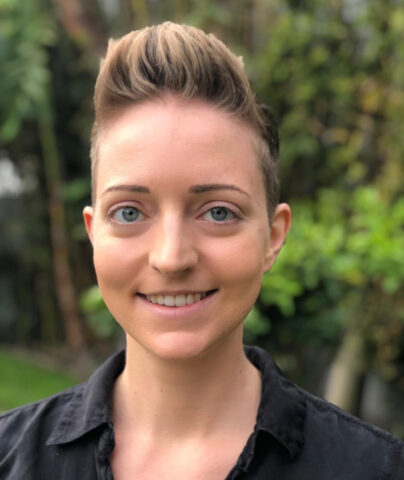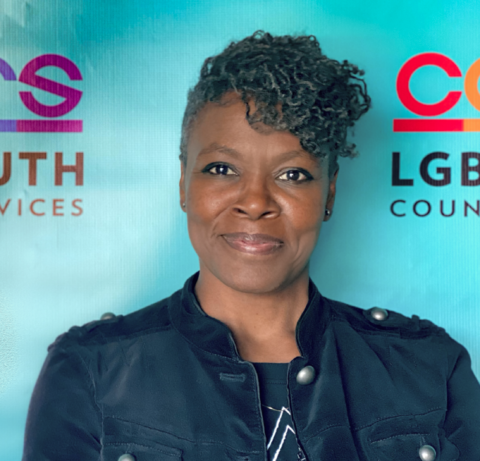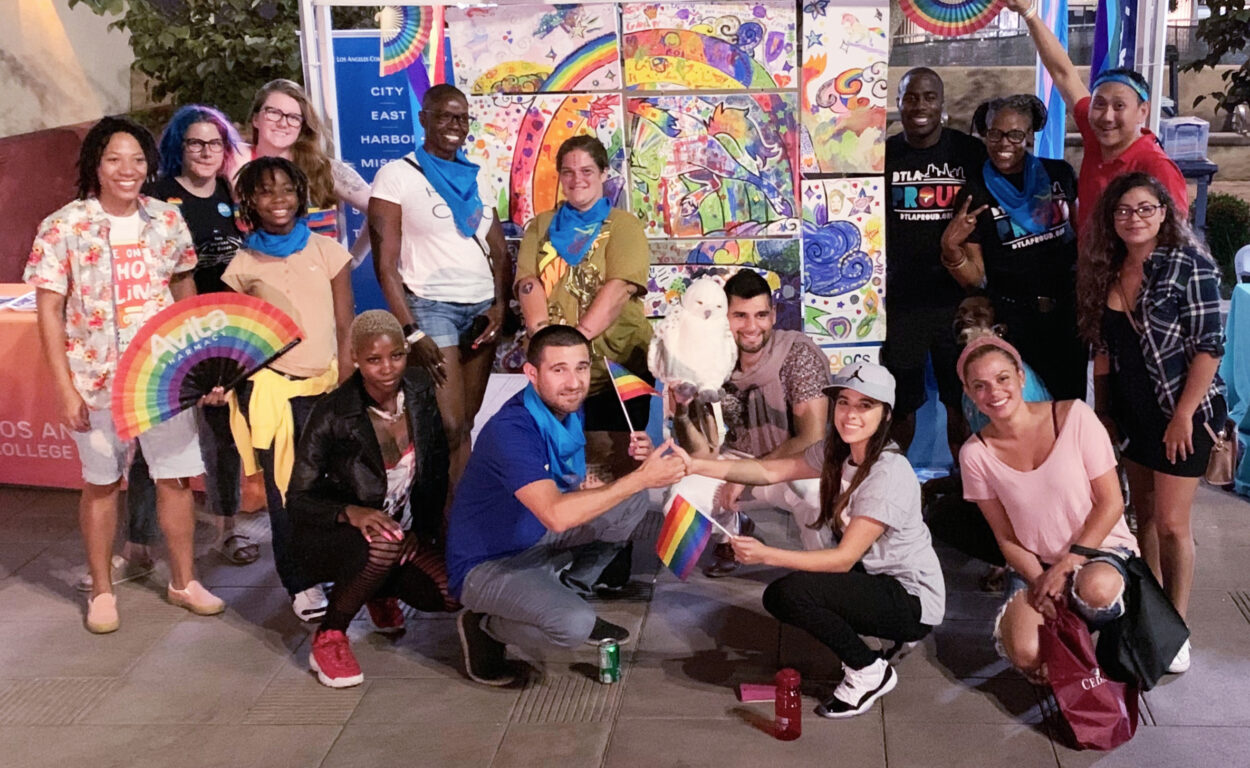Cynthia Ruffin directs COLORS LGBTQ Youth Counseling Services, a program that provides therapy for youth who identify as lesbian, gay, bisexual, transgender, queer, and other diverse sexualities and genders at Antioch Los Angeles. She’s proud of the work they do every day, but this year she’s feeling especially proud of the program’s longevity. In July, COLORS will celebrate a full decade of helping LGBTQ+ youth. Says Ruffin, “We have been free and unlimited for ten years.”
She’s not the only one excited about the anniversary and what it symbolizes. The founding director of COLORS, Dr. Douglas Sadownick, says that at ten years the program is the “crown jewel of Antioch.”
As the organizers, sponsors, clients, volunteers, and student therapists of COLORS prepare for a 10th-anniversary celebration on July 17th, they are reflecting on the founding of this special program, the many accomplishments of its first decade, and the goals they still have for it in the years to come.
Therapy That Affirms Identity
The COLORS program offers free, affirming therapy to LGBTQ+ youth under the age of 25 in the Los Angeles area. Attached to Antioch Los Angeles, COLORS provides a training site for therapist trainees and associates studying in the university’s Master of Arts in Clinical Psychology Program with a specialization in LGBT-Affirmative Psychology.
The idea that eventually became COLORS was the community project of a graduate student in the specialization. Their idea was to provide counseling services geared towards LGBTQ+ youth under 25 years of age, who are marginalized and often lack access to mental health services.
Out of this simple, selfless idea, a program began to take shape. Faculty like Dr. Sadownick believed in this concept, and he eventually became the founding director of the program that came to be called COLORS.
Today, Dr. Sadownick believes that, through this program, Antioch Los Angeles is a shining example of how to support the often-marginalized LGBTQ+ community.
From Concept to Thriving Program
The road to the program’s tenth anniversary has been varied, full of hope, disappointment, and finally triumph, and it really started back in 1973, when the American Psychiatric Association finally removed “homosexuality” as a psychiatric disorder in its Diagnostic and Statistical Manual. This first, baby step towards destigmatizing LGBTQ+ identity within the psychological establishment led to the adoption, in 2000, of new “Guidelines for the Treatment of Gay, Lesbian, and Bisexual Clients.” A few years later, in 2006, Antioch Los Angeles launched the LGBT-Affirmative Psychology Specialization. It was the first in the country.

Only with these pieces in place was it possible for the initial proposal for COLORS to come across the desk of Dr. Sadownick. But once it did, many people came together to make it a reality, including co-founder Dr. Philip Lance of Camino Nuevo Charter Academy, and COLORS opened its doors in the MacArthur Park area in 2011. This initial off-campus site was a rousing success, and in its first year of operation the program proved a strong demand for its services.
Eventually, rising costs and the explicitly stated desire to keep the counseling free moved the university to bring COLORS onto the Antioch Los Angeles campus in Culver City. Says Ruffin, “We’ve been working out of the Antioch University Counseling Center for the last seven years, and it’s been a bumpy and ultimately beautiful relationship.”
The relocation worked naturally because the majority of the therapist trainees and associates who provide services for COLORS are students in the Master of Arts in Clinical Psychology with the LGBTQ-Affirming Psychology specialization. Each therapist has been through a year of training and is supervised by a board-certified Clinical Supervisor. The program benefits them as they can gain practical experience toward their board certifications.
Trying to Do Right By Today’s Young People
One of the longest-serving therapists at COLORS is Cassie Karr, who has been working in different roles at the counseling center for two-and-a-half years. Today she is an Associate Marriage and Family Therapist at COLORS and also serves as its intake coordinator.
Karr says, “Working with LGBTQ+ youth is what attracted me to the program. I wish I had someone older and queer-identified to talk to when I was beginning to question my sexuality.”
Karr herself had multiple negative experiences in therapy as a young person trying to figure out her own identity. Some of the therapists she saw were better than others, but one, she says, “outed me to my mom when he promised he wouldn’t.” So as she was in college, Cassie made the decision that she wanted to help LGBTQ+ youth—and to provide a positive counterpoint to therapists who lack the training and sensitivity necessary to support the LGBTQ+ community.
Ruffin explains that one of the program’s missions, in fact, is to increase knowledge around LGBTQ+ issues in therapy. She says that one of COLORS’s most significant successes is that over “the last ten years, we’ve been advocating to educate people about what the LGBTQ community needs.” To Ruffin, this consciousness-raising work means being out in the community and spreading the message through involvement and advocacy.

Another way in which the staff spread the word about COLORS is through their website. On this site, the program can inform LGBTQ youth and speak to them directly through their youth blog that is starting to gain national attention. The blog is written anonymously by an LGBTQ+ youth, who writes under the pen name Anon. The blog and the site as a whole are designed to let youth know they are not alone and that there are people they can talk to in a discreet manner about any questions they are having.
Karr says that COLORS has become “like a family”—and that family is growing. COLORS has expanded to support up to sixteen therapists. This is incredible progress, but, at the same time, it is nowhere near enough to meet the need of the larger Los Angeles LGBTQ+ youth community. That is why both Cynthia Ruffin and Dr. Sadownick are looking towards the future.
A Vital Program’s Bright Future
Ruffin says that the foundations they’ve built over the last ten years have consisted largely of advocating for and educating the Los Angeles LGBTQ+ community to know that COLORS is a trustworthy and valuable resource. Now she is hoping to make further partnerships in local schools and universities, to bring COLORS-style therapy to youth who might otherwise not be able to access it.

“We have got some pretty good relationships with schools,” Ruffin says. But this consists mostly of referrals, which rely on the ability and willingness of parents to bring their children to therapy sessions. Explains Ruffin, “12 or 13-year-olds, for example, need their parents to drive them to Culver City for therapy.” But what happens when the parents aren’t supportive? That is the question driving Ruffin and Dr. Sadownick to try to build more partnerships with local schools. Ideally, if therapists could have sessions on-site at public middle and high schools, the program could reach more people in need.
“LGBTQ youth can opt-in to therapy without parental permission from age 12,” says Ruffin. “But they can’t get on the bus and go across town by themselves.” Hence the idea of embedding therapists at schools. Explains Ruffin, “The alternative is to be right on-site because youth can see a therapist anytime throughout their school day.”
Dr. Sadownick furthermore hopes to see a program like COLORS—a free therapy clinic for LGBTQ+-identifying youth—on “every campus” at the university level. There is a significant lack of therapists who are specifically trained to deal with the multitude of challenges that come from being a marginalized youth in today’s culture. That is why his focus is getting more therapists specialized in the needs of LGBTQ youths.
A Ten-Year Anniversary Bash
Before accomplishing all the further goals that our world needs, Dr. Sadownick, Ruffin, Karr, and all of the other people who have made COLORS what it is are going to celebrate its ten-year anniversary. The celebration, scheduled for July 17th, 2021, will be held in Dr. Sadownick’s backyard and will follow all the California Department of Health guidelines. Tickets are limited due to the ongoing pandemic, but those who want to come out and celebrate COLORS and are unable to attend in person will be welcomed to a digital livestream that will allow all who want to celebrate COLORS to do so virtually.
“We’re hoping to bring together hopefully about 100 people to come through and hear about what we’ve done in the last 10 years and how we intend to keep on growing,” Ruffin explains. The streaming link will be made available on the program’s website, colorsyouth.org.
Ruffin, Karr, and Dr. Sadownick want this anniversary to focus on all the hard work and impact COLORS has achieved. For this anniversary, says Ruffin, “the biggest thing is just to celebrate this beautiful accomplishment that we have been here and [that we have been able] to do this for 10 years without fail.”




